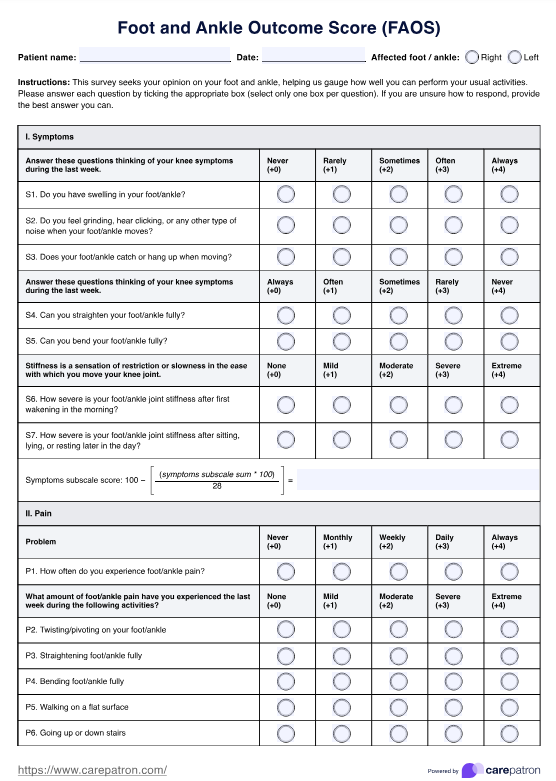The Foot and Ankle Outcome Score (FAOS) is versatile and suitable for evaluating various foot and ankle disorders, from acute injuries to chronic conditions affecting daily living and sports participation.

FAOS
Discover the essential guide for health professionals on the Foot and Ankle Outcome Score (FAOS), including scoring insights and a free template. Download now!
FAOS Template
Commonly asked questions
The frequency of Foot and Ankle Outcome Score (FAOS) assessments should be tailored to the patient’s treatment plan—typically at the initial visit, at regular intervals during treatment, and at the treatment conclusion to measure outcomes.
While the Foot and Ankle Outcome Score (FAOS) is straightforward, some training or familiarity with patient-reported outcome measures can enhance the accuracy of assessments and interpretations.
EHR and practice management software
Get started for free
*No credit card required
Free
$0/usd
Unlimited clients
Telehealth
1GB of storage
Client portal text
Automated billing and online payments











